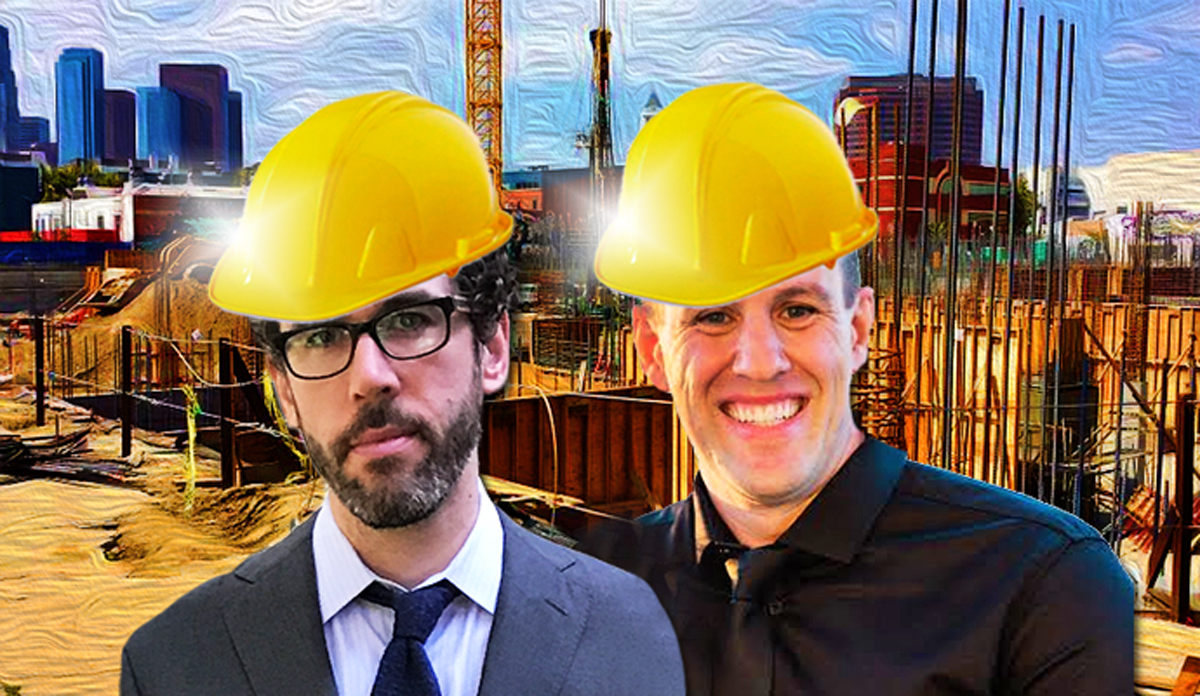Trending
The YIMBYs are coming: LA’s pro-development groups are building momentum
As the city and state grapple with a housing crisis, “Yes In My Backyard” supporters see an opening

For the YIMBYs of Los Angeles, no housing development project is too small to support.
Take a 77-year-old auto repair shop in Silverlake, whose owner wants to replace it with a 14-unit rental. Abundant Housing LA, a local pro-development group, has been pushing for the project, trying to counter a community effort to landmark the repair shop that was built in the Streamline Moderne Art Deco-style.
Abundant Housing’s decision to back the Silver Lake plan is part of an evolving strategy from YIMBY — Yes In My Backyard — groups throughout the city and state, whose ranks and influence are on the rise, real estate experts say. In L.A., where the lack of affordable housing has reached a crisis level, the YIMBYs see an opening.
While pro-development organizations continue to plough money into statewide initiatives to boost housing and expand existing zoning laws — which opponents say maintain affordability — in L.A., a grassroots movement at the neighborhood level is growing. YIMBYs are staking out territory block by block, hoping to influence development one project, and one elected official, at a time. That includes some City Council members who YIMBYs say have been too restrictive when it comes to development.
Part political platform, urbanism-philosophy and futurism, YIMBY groups share a similar vision but have no official nationwide organization. They are comprised of small groups, many of them organized on social media.
Locally, Josh Albrektson founded two YIMBY Facebook discussion groups that count 8,600 members among them. YIMBYs have long believed that the only way to address the lack of housing is to pack more people into the same amount of space. The recipe involves denser construction and fewer cars.
The YIMBY gospel can be distilled down to this: Build build build.
Albrekston is a true believer. “I would loooooove to talk about this stuff,” he said, returning a reporter’s call within minutes.
For YIMBYs, it’s all about supply and demand. Allow developers to build more housing units and prices will drop. Unlike the “Not In My Backyard” or NIMBY movement — that mostly opposes development projects in a specific neighborhood not necessarily the project itself — YIMBYs support construction everywhere.
With California’s housing shortage pushing rents and home prices ever higher, the argument could resonate with Angelenos struggling to find affordable housing in one of the tightest and priciest residential markets in the city’s history.
The YIMBY movement is also gaining ground in San Francisco, particularly among deep-pocketed tech entrepreneurs. Microsoft executive Nat Friedman and Pantheon CEO Zack Rosen founded a group called California YIMBY last fall. It received a $1 million cash infusion from the online payment startup Stripe in May. Stripe said California YIMBY shares the goal of “[lowering] economic barriers.”
State level lobbying continues with groups like California YIMBY, which pushed for Senate Bill 827. That measure would override existing zoning laws to make way for thousands of units of housing near transit stations. Opponents say it would make it easier to replace affordable housing with market-rate units.
The legislation was voted down in a committee hearing in April, but the bill’s author, Sen. Scott Weiner (D-San Francisco), plans to revise then reintroduce it next year. The loss was a blow for YIMBYs statewide. But Albrektson called it a positive step overall.
“The conversation has changed. Even if we don’t get SB 827, it woke a lot of people up,” he said.
With SB 827 on the backburner, California YIMBY is focused on other local causes, executive director Brian Hanlon said. “What we want to do is enable [local groups] to be more effective. We are going to provide organizer training, digital tools and services to them.”
Hanlon said California YIMBY plans to expand its operations in L.A., looking to find willing partners to take the fight to local elected officials.
It appears they will not have to look very far. Albrektson’s Facebook groups, GrowLA and DTLA Development, are a forum for data, development news and esoteric memes referencing state legislation. They also lampoon people they consider NIMBYs.
They intend to get involved in local elections, focusing on tight races where they can swing the vote. “We need to make sure NIMBY politicians don’t get re-elected,” Albrektson said. He likens the strategy to a mostly successful one bicycle advocates have been waging — through municipal and state measures — for more bike-friendly lanes.
But YIMBYs also have an image problem. Mostly white, well-educated and middle-class, they can come across as out of touch with residents in lower-income communities. Some critics also label them as stooges for developers, something Hanlon called a “conspiracy theory.”
“The money we’ve raised from developers for California YIMBY is under 5 percent of what we’ve raised,” he said. “I think there’s a lot of people who support YIMBYism and it’s not only planning academics.”
YIMBYs say they should be aligned with anti-displacement activists because both groups are fighting for the same thing. Albrektson argues that dense development in urban cores like Downtown will keep young, affluent renters out of working class areas like Boyle Heights, keeping those areas affordable.
But YIMBY skeptics contend there are far deeper problems to contend with.
“The market is a lot more complicated than supply and demand,” said Casey Maddren, president of the United Neighborhoods of Los Angeles. A property owner, Maddren said, is not “going to take a $3,000-per-month unit and cut the price in half because there’s a glut in the market.” That owner will just wait.
Maddren acknowledged that United Neighborhoods for Los Angeles didn’t have a solution for the housing crisis facing the city, but said the “well-intentioned” YIMBYs’ tendency to simplify the situation also hobbles them.
“They want to break everything down into the simplest terms possible — ‘we’re YIMBYs, you’re NIMBYs, and we’re in opposition,’” he said. “I think there are all sorts of reasons to be critical of a city’s development practices. And breaking people down into two or three groups isn’t adequate.”
Albrektson pushed back. To him, the housing crisis is that simple.
“Supply and demand applies to everything. YIMBYs make it simple because it is that simple,” he said. “We’ll end up being 5 percent of someone’s vote. That doesn’t always matter, but there might be a close race and we’ll focus on that.”
And he’s confident that it’s only a matter of time before the city and state adopts the YIMBY philosophy. L.A. will become more unaffordable unless there is a residential construction renaissance, Albrektson said.
“That’s the way California is going. It’s not going to be as good if we don’t build housing, and people understand that.”




